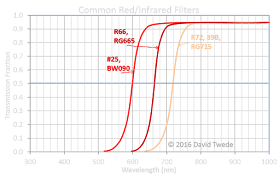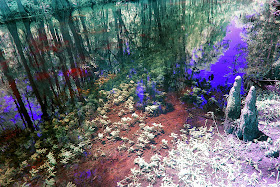Why do we die?
This question may be one of the most over-asked, cliché, unanswerable
and even ridiculous questions posed. But
I am serious. I don’t mean something
religious or something noble. Obviously
people die for causes—in defense of liberty, family, or sacrifice for the life
of another.
I’ve traveled across my own country, visiting many cemeteries
and memorials.
I wandered the U.S. Nation’s premiere places of rest for the valiant and brave.
I sat and pondered where soldier and politician are lain to peace.
I sat and pondered where soldier and politician are lain to peace.
I roamed some of the oldest burial places in the nation.
Full Spectrum and Infrared photos of these places add elements of eerie surrealism and mystic beauty.
We spend enormous resources to inter the body of loved ones, whether they were cherished, decrepit, or barely tolerated in life.
We spend enormous resources to inter the body of loved ones, whether they were cherished, decrepit, or barely tolerated in life.
Everyone dies, and yet everything in life belies the
original question: Why must we die?
In part my question is philosophical but ultimately it is
biological. I understand that death is
inevitable, and I know that religions and belief systems have constructed
scaffolding around our crumbling biology to give death meaning. I do not want to assess those myths or
beliefs.
We pay a lot of homage to something with so little
explanation. It yields the ultimate
power over everyone--wealthy, healthy and happy as well as poor, sore and
morose. But why does nature force us to
die?
The photo above won an international award almost a decade ago. The model of both photographs (taken at Evergreen Cemetery in Colorado), the photogenic and youthful Reina, tragically passed away only months after it was taken. When her family reached out to me to get copies of her portfolio, I was shocked about her death.
I studied biophysics in graduate school, and a good portion of my time was spent in research at the Institute of Gerontology at University of Michigan-Ann Arbor, where we debated the actual bio-molecular reasons for aging and death. Why is youth turned into decay at the sub-cellular level?
Science has a few answers about aging: growing evidence suggest a major yin-yang component to aging are molecules called telomeres. Telomeres are DNA–protein structures found at both ends of each chromosome. Like shoes on our feet, they protect our genome from getting stubbed and damaged by various processes. They string like beads at the chromosome terminals, and each time a cell divides, there is a probability of losing some of those telomeres. The length shortens as we age. Once they are used up, science shows that it brings on dramatic effects of aging because without these telomeres, the chromosome is highly prone to damage.
I have confidence that science will eventually solve the yin-yang of aging-cancer, and it may bring about a kind of immortality. But is that a good thing? Evolution has produced a few species which don't age.
The bristlecone pine tree in California named "Methuselah" is 4,848 years young. Scientists have studied the pollen and seeds from bristlecone pine trees about as old as Methuselah, as well as very young bristlecones and found literally no mutations or degradation between new and old seeds. In a bio-molecular sense, these pines don't age.
A year ago, traveling through Utah's national parks, I came across one of the most photographed bristlecones, whose immortality seemed to embolden it as it dared to grow precariously, as if tip-toed up to the cliff's edge of sunrise point at Bryce Canyon. I would say that it has more chance of a tourist destroying it than it does falling from its perch.
Perhaps death hangs over everyone for good reason. Most of us who have brushed shoulders with death (I did in a 2011 bicycling accident) understand that without the fear of death, life may grow dull and uninteresting. Evolution uses mutation to alter each generation, to compete with other evolved species that are mutating, and selects the most fit of each species to continue evolving until over epochs of time, we have great diversity of life and creatures, all still vying for the same limited resources. Some speculate that evolution selects species who live long enough to reproduce and yet die not long after they're no longer fertile, in order to leave resources for their offspring. Without death, there would never be enough resources remaining for the next generations. Imagine the environmental collapse if there were no death, and only birth.
Perhaps it is good to recognize death's utility and be thankful for the life we have, ready ourselves to depart and let the youth have their turn at experiencing the splendor the world offers. Sunset dawns on each life. Make yours spectacular!





































































